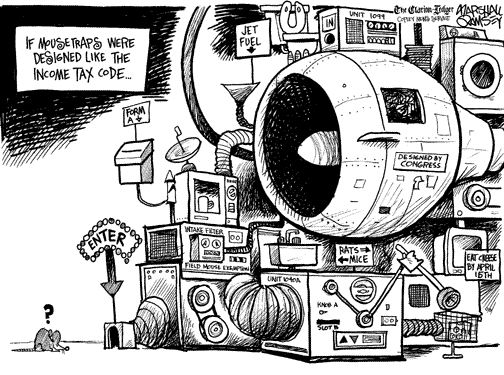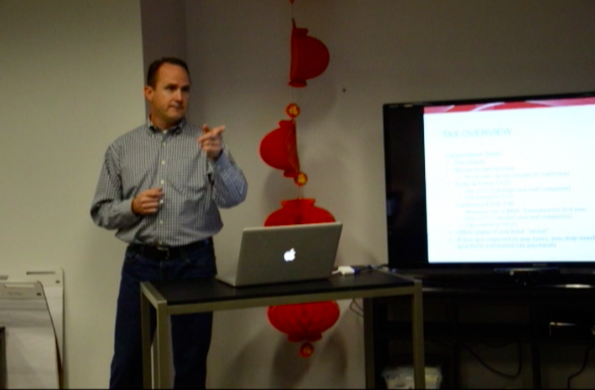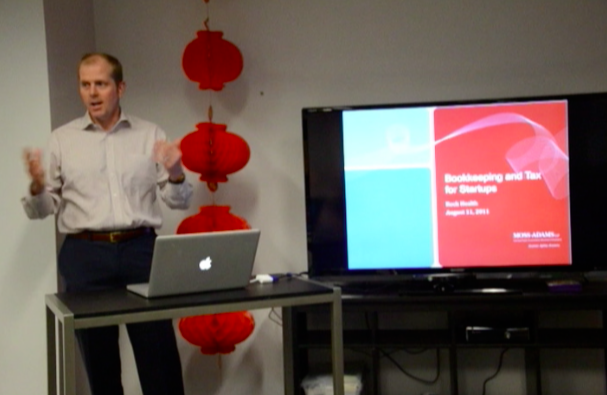Startup Accounting 101
One of the many hats that founders have to wear early on is that of CFO. Unfortunately, accounting is not the easiest subject to pick up on the fly. Richard Croghan and Derek Dowsett, partners at Moss Adams, came by to present basic accounting to ensure our startups are tracking accounts, doing taxes correctly and know when to outsource to professionals. To learn what you should be doing, check out the tips below.
Start keeping by good business records now. Although you may be using your own credit card or borrowing money from friends and family to get your business started, you still need to keep records of all expenses and profits. Here is a list of everything you should keep in a safe file or secure PDF.
Financial records to keep organized:
- Equity Agreements
- Contracts
- Stock option grants, exercises
- Bank statements
- Deposits
- Receipts
- Credit card statements
- Payroll information
- Tax filings
Life is easier with online banking, but it’s still vital to keep everything else organized. Also, remember to sign those contracts. These records can be kept using a number of programs. The following are startup-recommended solutions:
General Accounting: Quickbooks online, Quicken, Excel
Payroll: Payroll, Compupay, Pay Cycle
Other than keeping good records, here are a few other important CFO duties:
- Chose a year end– Most use the end of December
- Bank account reconciliation– Confirming that the balance in one’s checkbook matches the balance on the bank statement itself. Check out an example.
- Budgeting– Showing that you can budget early will exhibit your spending integrity to investors.

Another daunting accounting duty is taxes. You may be thinking, our startup isn’t making any profit- we don’t NEED to file for taxes. WRONG! Even if you are not making money you need to file some types of taxes, and most importantly, file on time. Below is a breakdown of important taxes for your small business.
Corporation taxes
- Based on net income: No income, no tax (except for California)
- Federal Form 1120: Due 3/15 (Calendar year-end companies)
- California Form 100: Minimum tax of $800. Exemption for first year. Due 3/15, can extend to 10/15
- Other states if you have “nexus”.
- If you are required to pay taxes, you may need to make quarterly estimated tax payments
Employment taxes
- Employee income tax withholding: Federal and state
- Social Security (12.4%/8.4%) and Medicare (2.9%) Taxes (FICA): Half paid by employer, Half paid by employee, Periodic deposits required – quarterly, monthly, semi weekly
- Federal unemployment: Employer pays, 6% of the first $7,000 wages, credit for CA unemployment
- State unemployment: Employer pays, 3.4% – of the first $7,000 wages
- State disability insurance: o1.2% of wages, Employee paid
- San Francisco payroll tax: o1.5% of payroll, Exempt is payroll less than $150,000
- Forms
Federal (order forms here)
W-2 – Annually for employees
1099 – Annual for payments to independent contractors
940 – Annual FUTA
941 – Quarterly payroll taxes
California
DE 9 – Quarterly payroll taxes
Others (Just when you think you were done…)
- Secretary of State Fee
- Delaware Franchise Tax: 2 ways of calculating (Assumed per value or authorized share) due March 1
- Sales and Use Taxes
These topics start to get complicated quickly, so it is important to weigh whether taking the time to learn these skills or outsourcing will help your business more. It may be valuable to your company to outsource if you are unable to keep up or make mistakes, but doing it yourself will help you keep your business lean. So if you are wearing the CFO hat, consider filling W2s and processing payroll just another tool in your belt. Building your understanding will help everything from fielding difficult questions from investors to sustaining your business as it grows.

Want to learn more and hear the answers to burning questions like: “How should I keep track of the money that I am loaning the company? Should I file as C-corp or S-corp? What can I reasonably expense for my business, especially at this early stage?” Check out the video of the workshop on our YouTube channel, or check out the below presentation.
